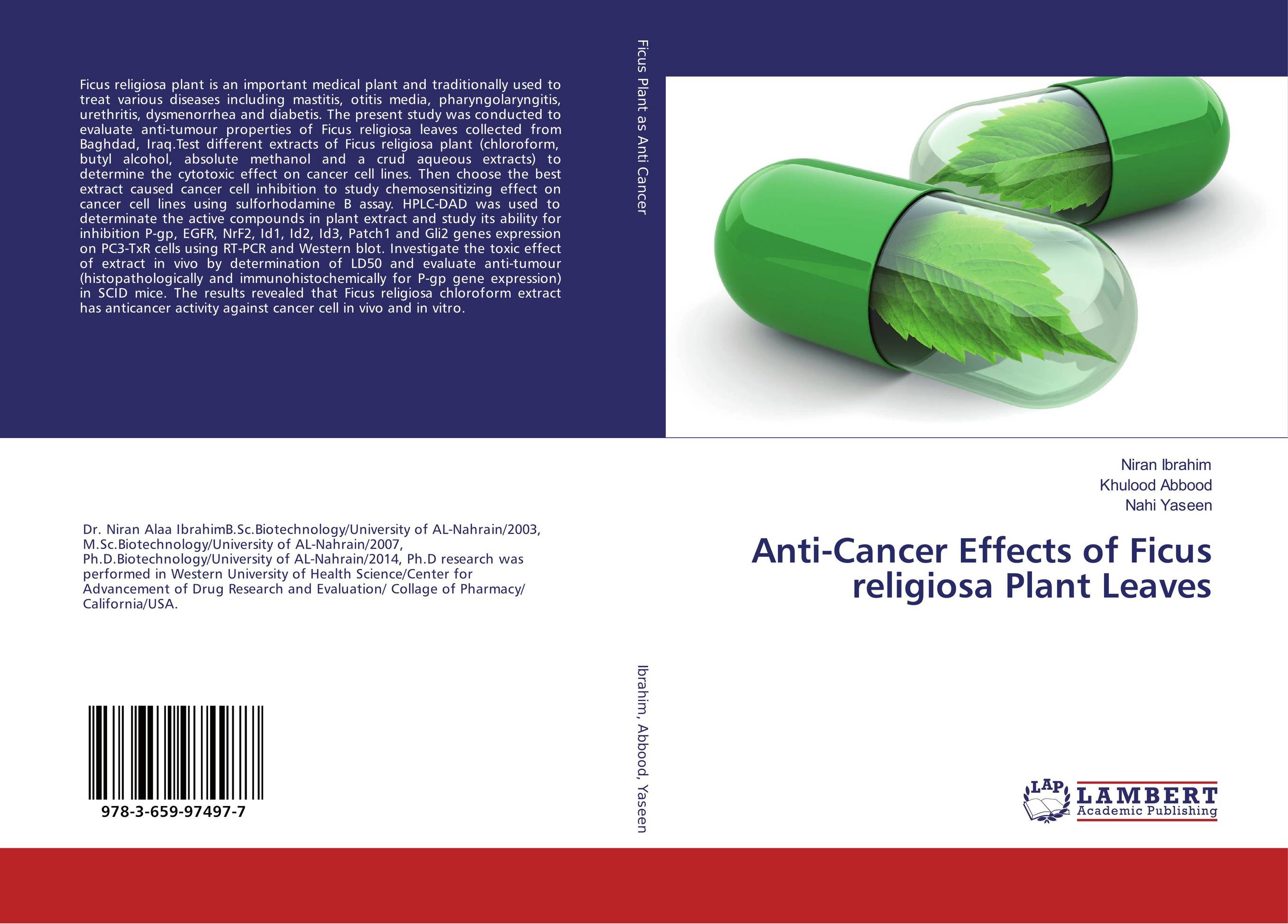| Поиск по каталогу |
|
(строгое соответствие)
|
- Профессиональная
- Научно-популярная
- Художественная
- Публицистика
- Детская
- Искусство
- Хобби, семья, дом
- Спорт
- Путеводители
- Блокноты, тетради, открытки
Anti-Cancer Effects of Ficus religiosa Plant Leaves.

В наличии
| Местонахождение: Алматы | Состояние экземпляра: новый |

Бумажная
версия
версия
Автор: Niran Ibrahim,Khulood Abbood and Nahi Yaseen
ISBN: 9783659974977
Год издания: 2016
Формат книги: 60×90/16 (145×215 мм)
Количество страниц: 176
Издательство: LAP LAMBERT Academic Publishing
Цена: 39429 тг
Положить в корзину
| Способы доставки в город Алматы * комплектация (срок до отгрузки) не более 2 рабочих дней |
| Самовывоз из города Алматы (пункты самовывоза партнёра CDEK) |
| Курьерская доставка CDEK из города Москва |
| Доставка Почтой России из города Москва |
Аннотация: Ficus religiosa plant is an important medical plant and traditionally used to treat various diseases including mastitis, otitis media, pharyngolaryngitis, urethritis, dysmenorrhea and diabetis. The present study was conducted to evaluate anti-tumour properties of Ficus religiosa leaves collected from Baghdad, Iraq.Test different extracts of Ficus religiosa plant (chloroform, butyl alcohol, absolute methanol and a crud aqueous extracts) to determine the cytotoxic effect on cancer cell lines. Then choose the best extract caused cancer cell inhibition to study chemosensitizing effect on cancer cell lines using sulforhodamine B assay. HPLC-DAD was used to determinate the active compounds in plant extract and study its ability for inhibition P-gp, EGFR, NrF2, Id1, Id2, Id3, Patch1 and Gli2 genes expression on PC3-TxR cells using RT-PCR and Western blot. Investigate the toxic effect of extract in vivo by determination of LD50 and evaluate anti-tumour (histopathologically and immunohistochemically for P-gp gene expression) in SCID mice. The results revealed that Ficus religiosa chloroform extract has anticancer activity against cancer cell in vivo and in vitro.
Ключевые слова: Ficus Religiosa, HPLC, RT-PCR, Western Blot, Cancer Cell line, SCID mice, Cytotoxic effect, Chemosenstizing Effect



